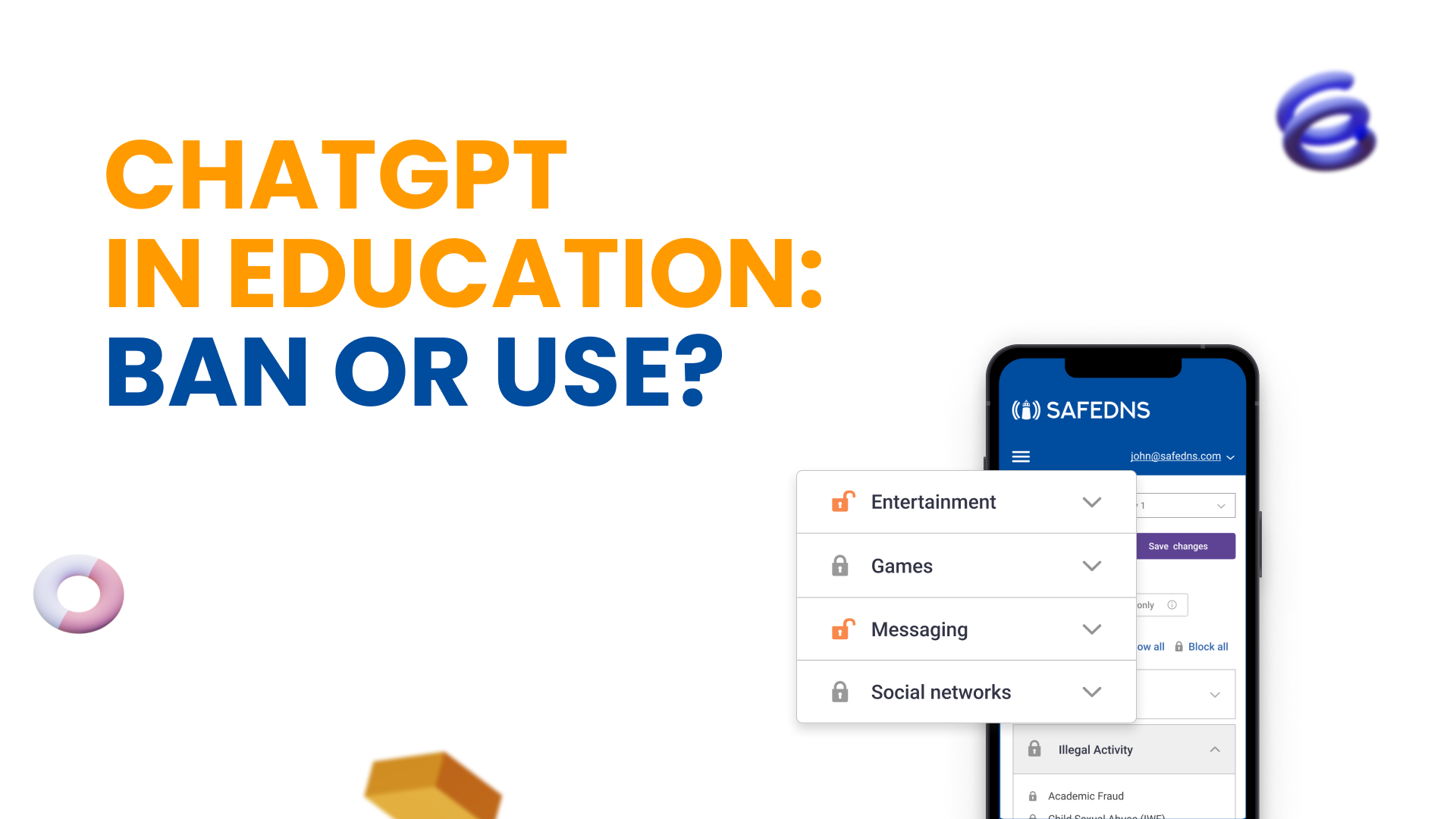
ChatGPT in education: use or ban?
In recent years, chatbots like ChatGPT have become increasingly popular as a tool for learning and research. While these advanced language models offer opportunities for enhanced learning and research, educational institutions have valid concerns about the potential distractions and inappropriate content that these chatbots can provide to students. One viable solution to this problem is the use of SafeDNS software, which can block inappropriate content, and also chatbots like ChatGPT. This blog post explores the dual nature of ChatGPT in education, delving into the advantages it presents for students' learning experiences and the potential pitfalls that necessitate the use of protective measures like SafeDNS.
In addition to blocking harmful websites, SafeDNS also has the ability to block access to specific applications and software, such as chatbots like ChatGPT. By blocking access to these chatbots, educational institutions can help ensure that students remain focused on their academic work and are not distracted by chatbots that are designed to engage and entertain.
However, there are ways such language models can aid students in their learning process. They can ask questions related to their studies, and receive answers in real-time. This can help clarify concepts and solve doubts. Artificial Intelligence can provide examples and illustrations to help students understand complex concepts in a better way. It can also suggest online resources such as articles, videos, and tutorials related to the student's queries or topic of interest, and generate practice exercises and questions for students to solve, to help them reinforce their learning. From creating interactive learning games for students to practice and reinforce their understanding of a concept to providing synonyms, and antonyms, and suggesting corrections for misspelled words, such AI models can be a benefit to students if used correctly.
While chatbots like ChatGPT can be useful tools for learning and research, they can also be a source of distraction and inappropriate content for students. SafeDNS provides an effective solution to this problem by blocking access to chatbots and other inappropriate content on the internet. By using SafeDNS, educational institutions can help ensure that students remain focused on their academic work and are not exposed to harmful or distracting content on the internet.
In conclusion, education can evolve with technology, embracing the advantages of AI in enhancing learning experiences while simultaneously safeguarding students from the pitfalls that may arise. Educators can ensure that these innovative technologies become valuable assets in the educational arsenal, contributing to a more engaging and effective learning environment.
Use promocode Chatgpt_10 to get 10% off your pricing. Start here.
Article written with the help of ChatGPT.
Take advantage of the SafeDNS trial period and try all the best features

